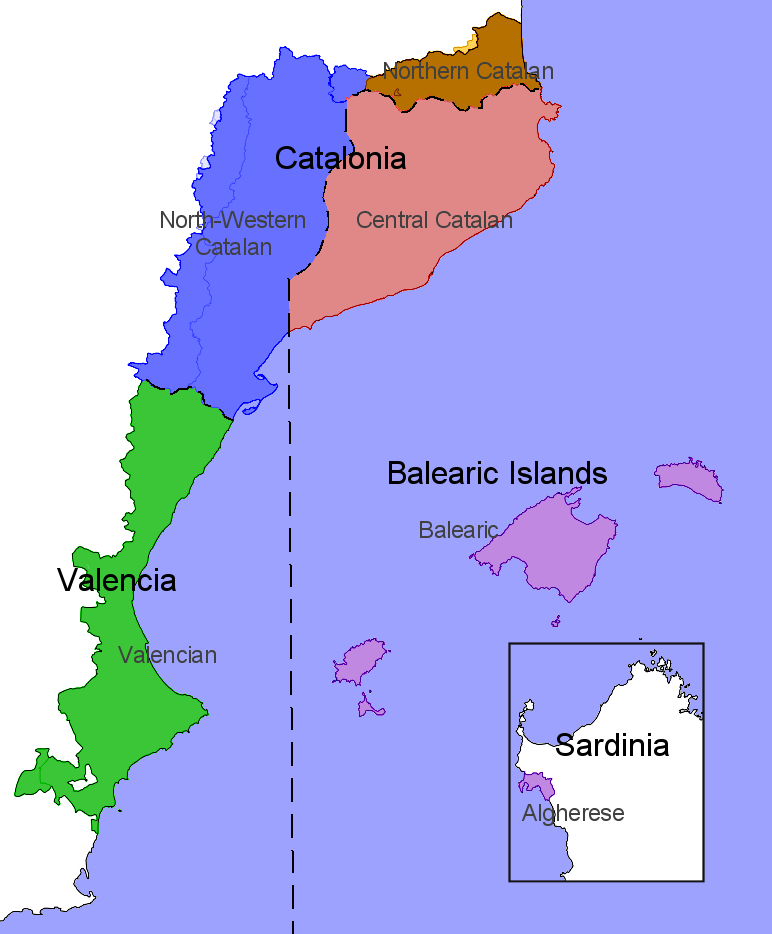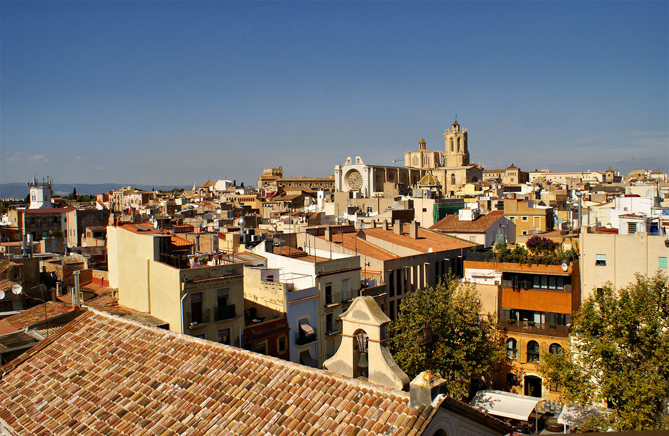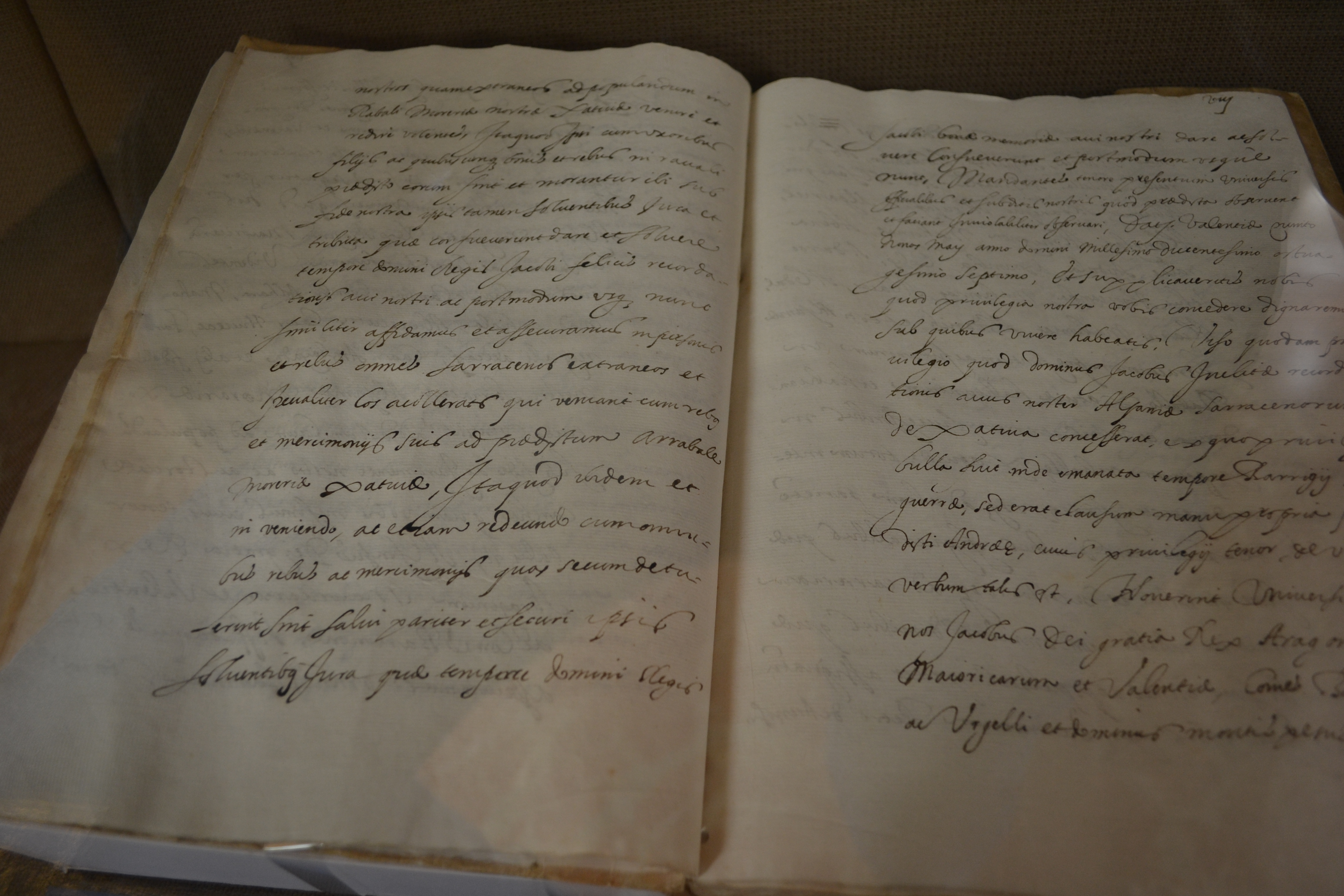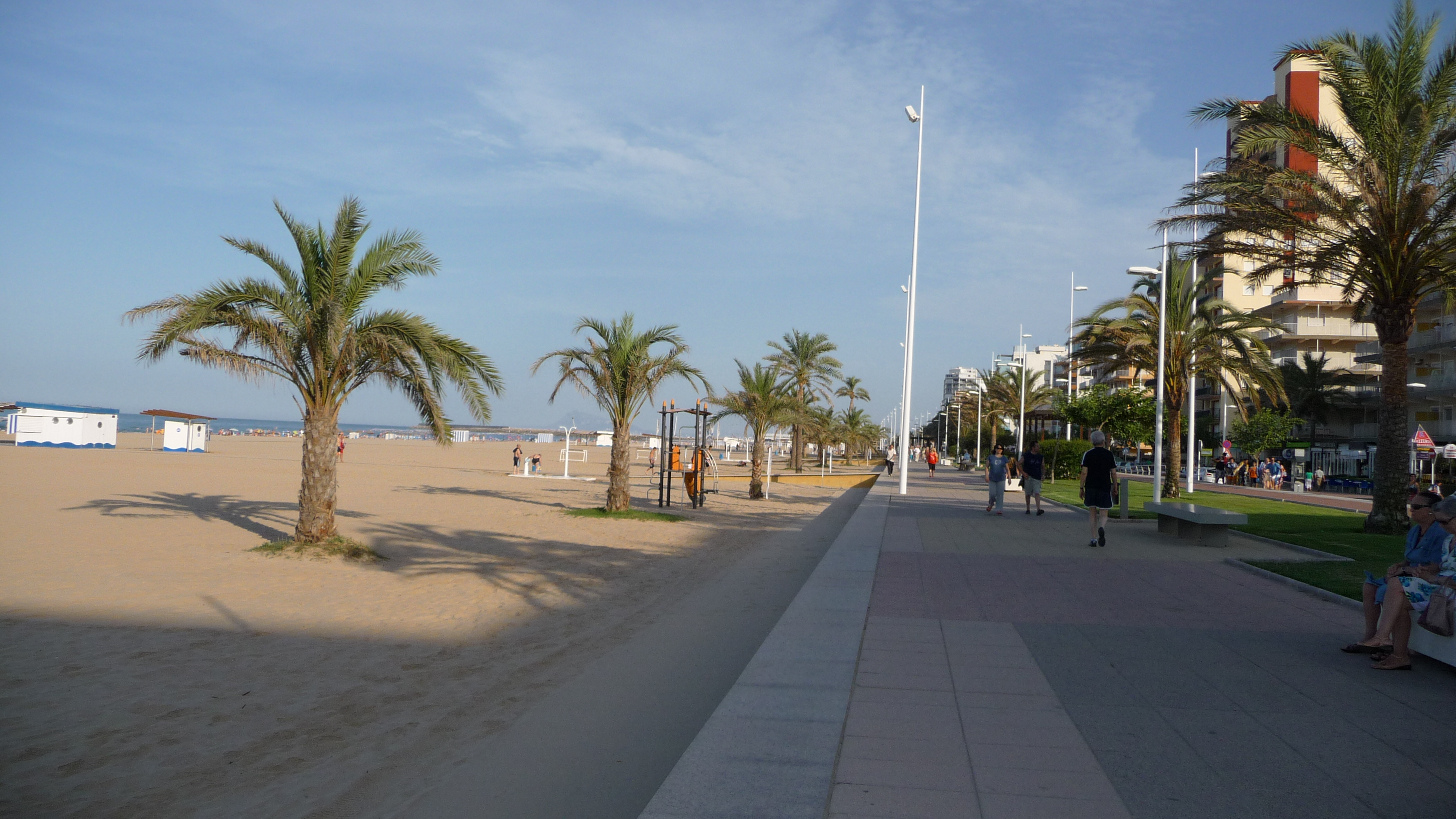|
Catalan Dialects
The Catalan dialects feature a relative uniformity, especially when compared to other Romance languages; both in terms of vocabulary, semantics, syntax, morphology, and phonology. Mutual intelligibility between its dialects is very high, estimates ranging from 90% to 95%.Central Catalan has 90% to 95% inherent intelligibility for speakers of Valencian (1989 R. Hall, Jr.), cited oEthnologue The only exception is the isolated idiosyncratic Alguerese dialect. Overview In 1861, linguist Manuel Milà i Fontanals split Catalan into two main dialects: Western and Eastern. The most obvious phonetic difference lies in the treatment of unstressed a and e, which have merged to in Eastern dialects, but remain distinct as and in Western dialects. There are a few other differences in pronunciation, verbal morphology, and vocabulary. Western Catalan comprises the two dialects of Northwestern Catalan and Valencian; the Eastern block comprises three to four dialects (depending on their clas ... [...More Info...] [...Related Items...] OR: [Wikipedia] [Google] [Baidu] |
Catalan Dialects-en
Catalan may refer to: Catalonia From, or related to Catalonia: * Catalan language, a Romance language * Catalans, an ethnic group formed by the people from, or with origins in, Northern Catalonia, Northern or southern Catalonia Places * 13178 Catalan, asteroid #13178, named "Catalan" * Catalán (crater), a lunar crater named for Miguel Ángel Catalán * Çatalan, İvrindi, a village in Balıkesir province, Turkey * Çatalan, Karaisalı, a village in Adana Province, Turkey * Catalan Bay, Gibraltar * Catalan Sea, more commonly known as the Balearic Sea * Catalan Mediterranean System, the Catalan Mountains Facilities and structures * Çatalan Bridge, Adana, Turkey * Çatalan Dam, Adana, Turkey * Catalan Batteries, Gibraltar People * Catalan, Lord of Monaco (1415–1457), Lord of Monaco from 1454 until 1457 * Alfredo Catalán (born 1968), Venezuelan politician * Alex Catalán (born 1968), Spanish filmmaker * Arnaut Catalan (1219–1253), troubador * Diego Catalán (1928–2008), Spa ... [...More Info...] [...Related Items...] OR: [Wikipedia] [Google] [Baidu] |
Province Of Tarragona
Tarragona (, ) is a province of eastern Spain, in the southern part of the autonomous community of Catalonia. It is bordered by the provinces of Castellón, Teruel, Zaragoza, Lérida and Barcelona and by the Mediterranean Sea. The province's population is 795,902 (2018), about one fifth of whom live in the capital, Tarragona. Some of the larger cities and towns in Tarragona province include Reus, Salou, El Vendrell, Tortosa, Valls, Amposta. This province has 183 municipalities. The province includes several World Heritage Sites and is a popular tourist destination. There are Roman Catholic cathedrals in Tarragona and Tortosa. History After the Umayyad conquest of Hispania in the late eighth century, this part of Spain came under the control of the Umayyad Caliphate and most of the Iberian peninsula was known as Al-Andalus, and was dominated by Muslim rulers. Abd al-Rahman I founded an independent dynasty that survived in the region until the 11th century. After the M ... [...More Info...] [...Related Items...] OR: [Wikipedia] [Google] [Baidu] |
Province Of Lleida
The Province of Lleida (; Aranese Occitan: Lhèida ; es, Lérida ) is one of the four provinces of Catalonia. It lies in north-eastern Spain, in the western part of the autonomous community of Catalonia, and is bordered by the Provinces of Girona, Barcelona, Tarragona, Zaragoza and Huesca and the countries of France and Andorra. It is often popularly referred to as Ponent (i.e. the West). Of the population of 414,015 (2007), about 30% live in the capital, Lleida. Some other towns in the Province of Lleida are La Seu d'Urgell (see the archbishop, who is also the co-prince to Andorra), Mollerussa, Cervera, Tàrrega, and Balaguer. There are 231 municipalities in Lleida. (See '' List of municipalities in Lleida.'') Located in the Pyrenees, the Aran Valley is a special comarca with greater autonomy and with Aranese, a variety of Occitan, as its official language. The Aigüestortes i Estany de Sant Maurici National Park is located in this province. The province en ... [...More Info...] [...Related Items...] OR: [Wikipedia] [Google] [Baidu] |
Andorra
, image_flag = Flag of Andorra.svg , image_coat = Coat of arms of Andorra.svg , symbol_type = Coat of arms , national_motto = la, Virtus Unita Fortior, label=none (Latin)"United virtue is stronger" , national_anthem = "The Great Charlemagne" , image_map = Location Andorra Europe.png , map_caption = , image_map2 = , capital = Andorra la Vella , coordinates = , largest_city = capital , official_languages = Catalan , ethnic_groups = , ethnic_groups_year = 2017 , religion = Christianity (Catholicism) , religion_ref = , demonym = Andorran , government_type = constitutional elective diarchy , leader_title1 = Co-Princes , leader_name1 = , leader_title2 = Representatives , leader_name2 = , leader_title3 = Prime Minister ... [...More Info...] [...Related Items...] OR: [Wikipedia] [Google] [Baidu] |
Valencian
Valencian () or Valencian language () is the official, historical and traditional name used in the Valencian Community (Spain), and unofficially in the El Carche comarca in Murcia (Spain), to refer to the Romance language also known as Catalan.«Otra sentencia equipara valenciano y catalán en las oposiciones, y ya van 13.» ''20 minutos'', 7 January 2008.Decreto 84/2008, de 6 de junio, ... [...More Info...] [...Related Items...] OR: [Wikipedia] [Google] [Baidu] |
Valencian Language Controversy
The Valencian linguistic conflict,El model valencià de política lingüística , Anselm BodoqueLa deriva estandarditzadora valenciana. Del secessionisme rupturista a l’aïllacionisme particularista /ref> also known as Valencian sociolinguist conflict, refers to the [...More Info...] [...Related Items...] OR: [Wikipedia] [Google] [Baidu] |
Xàtiva
Xàtiva (, es, Játiva ) is a town in eastern Spain, in the province of Valencia, on the right (western) bank of the river Albaida and at the junction of the Valencia–Murcia and Valencia Albacete railways. It is located 25 km west of the Mediterranean Sea. During the Al-Andalus Islamic era, Arabs brought the technology to manufacture paper to Xàtiva. In the 12th century, Xàtiva was known for its schools, education, and learning circles. Islamic scholar Abu Ishaq al-Shatibi's last name refers to Xàtiva where he lived and died. After the Reconquista by Northern Christian kingdoms and the following Christian repopulation, the city became the cradle of one of the most powerful and controversial families of the Renaissance, the House of Borgia, which produced Popes like Callixtus III (Alfonso de Borgia) and Alexander VI (Rodrigo de Borgia). History Xàtiva (''Saetabis'' in Latin) was famous in Roman times for its linen fabrics, mentioned by the Latin poets Ovid and C ... [...More Info...] [...Related Items...] OR: [Wikipedia] [Google] [Baidu] |
Alcoi
Alcoy ( ca-valencia, Alcoi) is an industrial and university city, region and municipality located in the Valencian Community, Spain. The Serpis river crosses the municipal boundary of Alcoy. The local authority reported a population of 61,135 residents in 2018. History The first traces of human presence in the area date to c. 60,000 years ago, when Neanderthal hunters settled here, in a site now called El Salt. A site with rock paintings, dating to c. 10,000/6,500 years ago, has been discovered near la Sarga. From around the mid-3rd millennium BC people started to move from the caves to the plain where cereals were grown, while mountain fortifications were erected (''Mola Alta de Serelles'', ''Mas del Corral'', ''Mas de Menente'', ''El Puig''). After the Roman conquest of the Iberians, several rural villas were built in the area, as well as a necropolis. The town was established in 1256 by James I of Aragon, with the construction of a castle on a strategic position over the Ser ... [...More Info...] [...Related Items...] OR: [Wikipedia] [Google] [Baidu] |
Gandia
Gandia ( es, Gandía) is a city and municipality in the Valencian Community, eastern Spain on the Mediterranean. Gandia is located on the Costa del Azahar (or ''Costa dels Tarongers''), south of Valencia and north of Alicante. Vehicles can access the city through road N-332. Gandia operated as an important cultural and commercial centre in the 15th and 16th centuries: in the 15th century it had a university. It was home to several important people, including the poet Ausiàs March (1400-1459) and the novelist Joanot Martorell (1410-1465). It is perhaps best known for the Borja or Borgia, through their family title, Duke of Gandia (originally created in 1399). Gandia is one of the largest coastal towns in Spain, with a population over 200,000 during summer, and a centre of commerce and tourism in its region. There are two main zones, Gandia City, which has all the historical monuments, commercial activity, and shopping, and Gandia beach, which has apartments and summer resi ... [...More Info...] [...Related Items...] OR: [Wikipedia] [Google] [Baidu] |
Province Of Alicante
Alicante ( ca-valencia, Alacant) is a province of eastern Spain, in the southern part of the Valencian Community. It is the second most populated Valencian province. Likewise, the second and third biggest cities in the Valencian Community (Alicante and Elche, respectively) are located in this province. Alicante is bordered by the provinces of Murcia on the southwest, Albacete on the west, Valencia on the north, and the Mediterranean Sea on the east. The province is named after its capital, the city of Alicante. Territory, population and resources According to the 2018 population data, Alicante ranks as the fourth most populous province in Spain (after Madrid, Barcelona and Valencia), with 1,838,819 inhabitants. Cities with more than 50,000 inhabitants in the province are Alicante (334,757 inhabitants), Elche (230,112), Torrevieja (101,792), Orihuela (86,164), Benidorm (71,034), Alcoy (61,552), Elda (55,168), and San Vicente del Raspeig (53,126). [...More Info...] [...Related Items...] OR: [Wikipedia] [Google] [Baidu] |
Province Of Valencia
Valencia ( ca-valencia, València) is a province of Spain, in the central part of the autonomous Valencian Community. Of the province's over 2.5 million people (2018), one-third live in the capital, Valencia, which is also the capital of the autonomous community and the 3rd biggest city in Spain, with a metropolitan area of 2,522,383 people it is also one of the most populated cities of Southern Europe.http://appsso.eurostat.ec.europa.eu/nui/show.do?dataset=met_pjanaggr3&lang=en There are 265 municipalities in the province. History Although the Spanish Constitution of 1812 loosely created the province of València, a stable administrative entity does not arise until the territorial division of Spain in 1833, remaining today without major changes. The Provincial Council of Valencia dates from that period. After the Valencian Statute of Autonomy of 1982, the province became part of the Valencian Community. Valencian and Spanish are the official languages. Geography It is bor ... [...More Info...] [...Related Items...] OR: [Wikipedia] [Google] [Baidu] |
Pompeu Fabra
Pompeu Fabra i Poch (; Gràcia, Barcelona, 20 February 1868 – Prada de Conflent, 25 December 1948) was a Spanish engineer and grammarian. He was the main author of the normative reform of contemporary Catalan language. Life Pompeu Fabra was born in Gràcia, which at that time was still separate from Barcelona, in 1868. He was the last of twelve children born to Josep Fabra i Roca and his wife Carolina Poch i Martí. When Pompeu was six, the family moved to Barcelona. From a fairly young age Fabra dedicated himself to the study of the Catalan language. Through the journal and publishing house , he participated in a campaign to reform Catalan orthography between 1890–92. He published ''Tractat d'ortografia catalana'' with the writer and publisher and , a notable lawyer and writer, in 1904. Despite his personal interest in linguistics, Fabra studied industrial engineering in Barcelona and in 1902 accepted a chair of chemistry position at the School of Engineering in Bilba ... [...More Info...] [...Related Items...] OR: [Wikipedia] [Google] [Baidu] |







